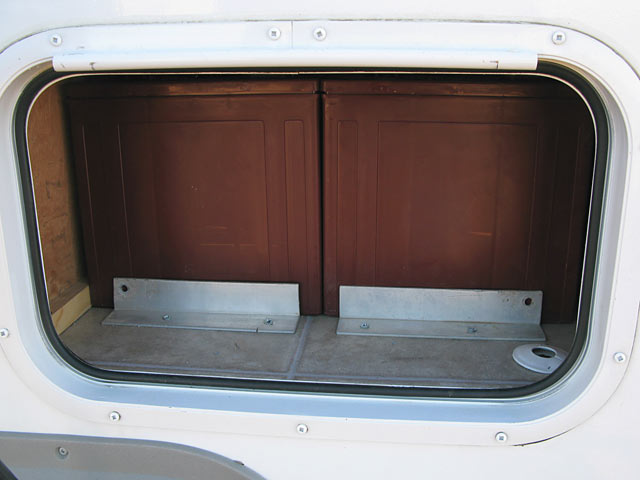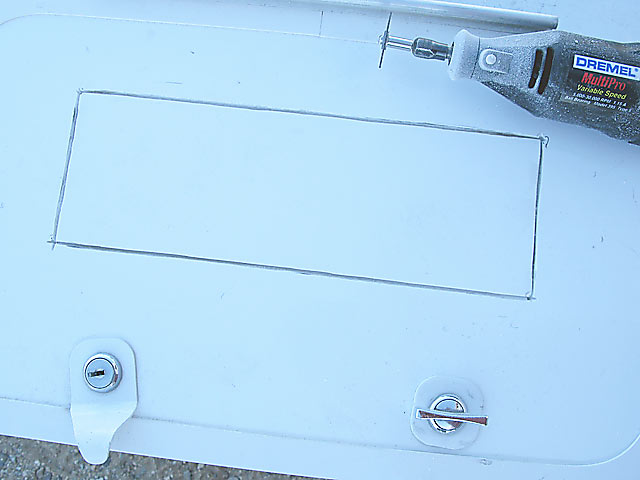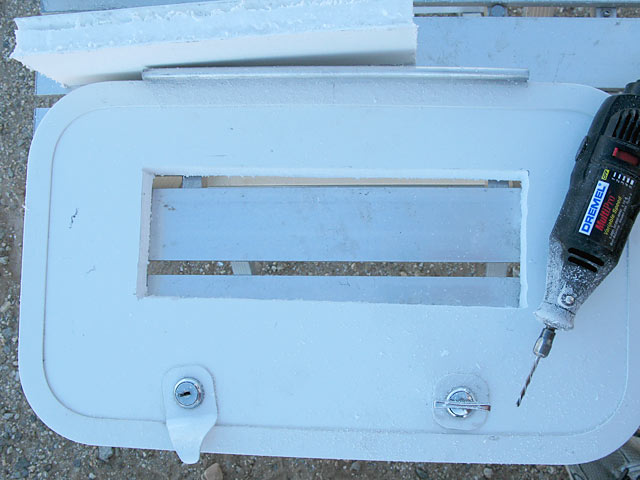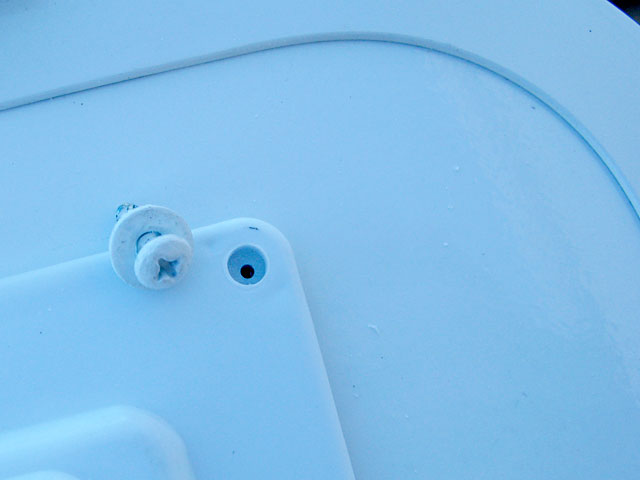You may want to add ventilation to your exterior RV cabinet doors for a number of reasons. I decided to add a louvered vent in the door to the compartment where we relocated our batteries during our RV solar power system installation.

Your RV battery compartment should be vented to provide circulation of air, keeping the batteries cool, and preventing build-up of gasses. Since the four new 6v Trojans wouldn’t fit in our existing battery bank location, we relocated them to another compartment that did not have a ventilated door.
5 Easy Steps for Adding Vents to RV Cabinet Doors
Whether you need to ventilate a battery compartment, or just want to add ventilation to improve airflow and prevent mildew, you can follow these simple steps to add a louvered vent to any RV cabinet door. If you have the correct parts, and right tools for the job.
 You Will Need:
You Will Need:
[unordered_list style=”tick”]
- Louvered Exterior RV Cabinet Vent
- Silicone or Dicor Sealant
- Power Drill with Small Bit
- Jig Saw, RotoZip or Dremel with Cut-off Wheel & Cutting Bit
- Screw Driver & Small Screws
- Pliers or Side Cutters
- Rubber Mallet or Hammer and Block (Optional)
- Measuring Tape or Ruler
- Pencil or Marker
[/unordered_list]
[box type=”info” size=”large” style=”rounded” border=”full”]Find the largest selection of Ventline RV vents on Amazon![/box]
1. Remove RV Cabinet Door
Depending on how your RV cabinets are constructed, removing the door may be the most difficult part of this job. Carefully remove the rivet holding the retainer plug in place inside the hinge profile.

Use side cutters or pliers to remove the rivet, then slide the door out of the hinge. This may take some gentle persuasion to dislodge the plug holding the door in place. If you cannot slide the door free, use a mallet to tap it loose. Place a block on the edge of the door to prevent any damage.

2. Mark Location of Louvered Vent
Lay the door on a flat surface. Center your exterior RV replacement vent in the desired location on top of the door and trace the part that will insert into the cabinet.

3. Cut Hole in Door
Most RV cabinet doors are constructed of high density foam sandwiched between rigid vinyl or aluminum.
If using a jig saw, drill pilot holes in each of the four corners and cut straight lines through the full door.

I used the cut-off wheel attachment on our Dremel to cut through one side first. This groove served as a straight guide for using the multipurpose cutting bit to cut all the way through.

4. Insert & Secure Vent
Place your louvered vent in hole you’ve cut and ensure it fits snugly with its flange resting flush with the door surface. Mark spots on door at center of all holes in vent. Remove vent and drill small pilot holes for screws you will use to secure the vent in place.

Add a thin bead of Dicor sealant under vent flange, and a small drop in each hole you drilled. Insert the vent back in the hole and secure it to the door with the screws. Do not over-tighten. Optional: Add small washers to prevent the screws from cracking the plastic vent, and paint them white with exterior enamel if desired.

Add more Dicor or caulk around the crack on the inside to seal the vent.
[box type=”note” style=”rounded” border=”full”]NOTE: Make sure the louvers of the vent are pointing down before sealing it in place![/box]
5. Re-attach Cabinet Door
Slide the door back into the hinge profile, and secure it in place by inserting a small screw into the hole where you removed the rivet.

Your RV cabinet is now ventilated!
Do you like DIY RV tips like this?
We like sharing all the do it yourself RV modifications we’ve made to our rig. If you enjoy reading them, leave a comment and subscribe below to be notified of future blog updates. If not, let us know what you do want to read about!
Great idea. Also excuse to get a new tool. ;-]